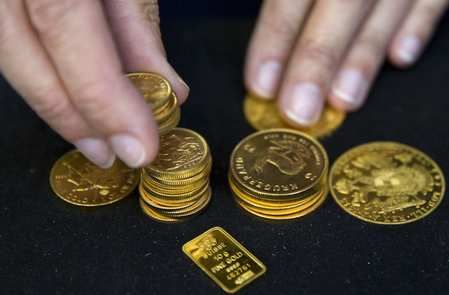In a significant shift in the global financial order, gold has overtaken the euro as the world’s second-most important reserve asset, according to a recent report from the European Central Bank (ECB). This remarkable change has been driven by a combination of record central bank purchases and surging gold prices, reflecting growing demand for safe-haven assets amid geopolitical instability and economic uncertainty.
A Shift in Global Reserve Preferences
Traditionally, global foreign exchange reserves have been dominated by the U.S. dollar, with the euro holding a strong second place since its introduction in 1999. However, as per the ECB’s latest financial stability review, gold now surpasses the euro in its importance as a reserve asset for many central banks globally.
According to ECB Executive Board Member Isabel Schnabel, “Gold has become increasingly attractive due to its resilience in times of crisis and its independence from the credit risk and monetary policy of any individual country or bloc.”
Driving Factors Behind Gold’s Ascent
1. Record Central Bank Purchases
The World Gold Council (WGC) has repeatedly reported record levels of gold buying by central banks over the past two years. Countries such as China, Russia, India, and Turkey have significantly increased their gold holdings in a strategic move to diversify away from the dollar and euro, while insulating their economies from sanctions and market volatility.
2. Surging Prices
Gold prices have hit historic highs in 2024–25, crossing $2,400 per ounce in many markets. This price rally is fueled by:
-
Persistent inflation fears
-
Rising geopolitical tensions (Ukraine conflict, Middle East instability)
-
Weakening confidence in fiat currencies
-
Expectation of future rate cuts in major economies
3. Erosion of Euro Confidence
The euro has faced several challenges in recent years, including:
-
Stagnant growth in the Eurozone
-
Political fragmentation within the EU
-
Continued reliance on the ECB’s accommodative monetary policies
This has diminished the euro’s reliability as a long-term store of value in the eyes of many reserve managers.
Implications for Global Finance
The rise of gold as a top-tier reserve asset reflects a broader trend towards de-dollarization and diversification of reserves. While the U.S. dollar remains dominant, the growing share of gold suggests central banks are hedging against financial system vulnerabilities and the unpredictability of geopolitical alliances.
Moreover, gold’s rise could reshape the international monetary architecture, particularly if central banks continue to increase gold holdings and reduce exposure to currencies associated with high debt or unstable political environments.

